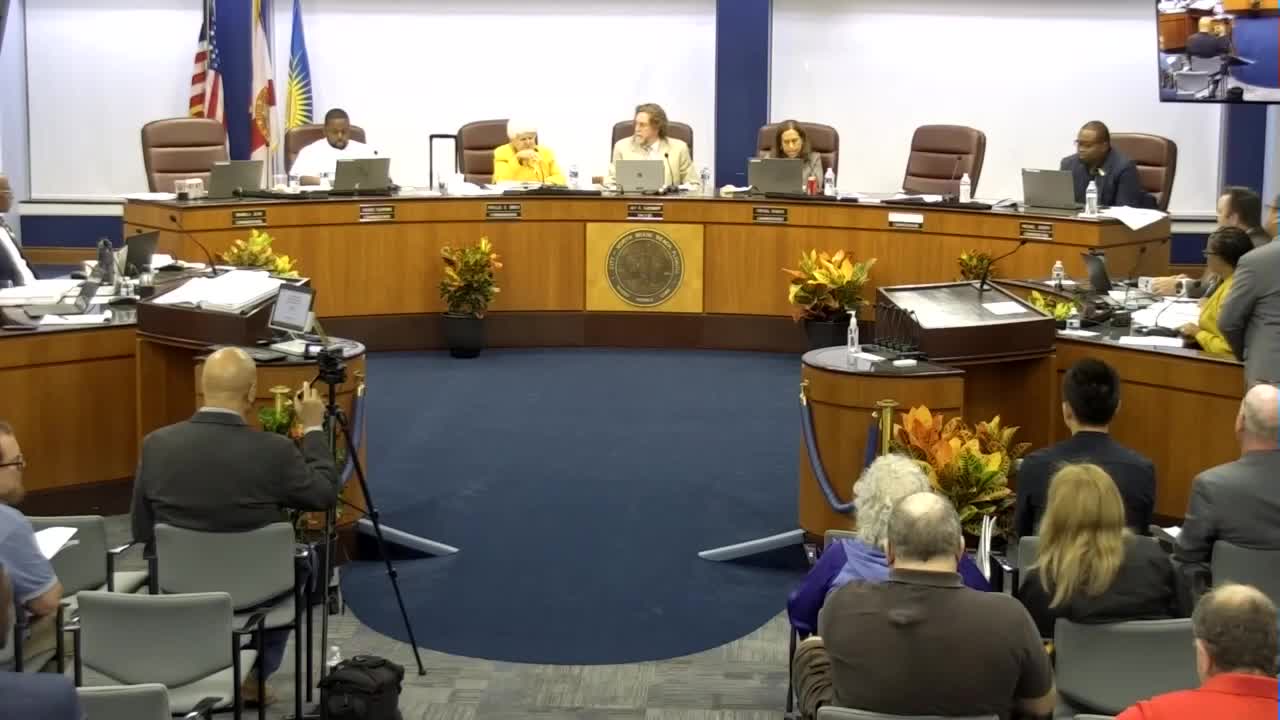Planning Commission Approves Helio Project with 378 Residential Units in Northeast Miami
October 02, 2023 | North Miami Beach, Miami-Dade County, Florida
This article was created by AI summarizing key points discussed. AI makes mistakes, so for full details and context, please refer to the video of the full meeting. Please report any errors so we can fix them. Report an error »

In the heart of North Miami Beach, city officials gathered under the bright lights of the commission chamber to discuss a significant development project that could reshape the community. The proposed Helio project, set to rise at 1700 Northeast 164th Street, aims to transform a vacant lot into a bustling mixed-use complex featuring 378 residential units and approximately 15,600 square feet of commercial space. As the meeting unfolded, the air was thick with anticipation and concern from both officials and residents alike.
The project, which includes a 24-story building reaching 215 feet, has sparked a mix of excitement and apprehension among community members. City staff presented the details, highlighting the need for five variances related to building length, parking access, and loading space requirements. The developers, represented by Ethan Wasserman, emphasized the project's potential to invigorate local commerce and provide much-needed housing. They noted that the design would include ample parking—485 spaces—exceeding the zoning requirements.
However, the proposal was met with skepticism from residents who voiced concerns about increased traffic, strain on local schools, and the adequacy of parking. Many expressed fears that the influx of new residents would exacerbate existing issues in the area, particularly regarding traffic congestion on already busy roads like Hannaford Boulevard and 164th Street. One resident, David Zapin, raised questions about the project's impact on local infrastructure and the need for a thorough analysis of its effects on the community.
As the public testimony segment unfolded, voices echoed the need for transparency and accountability from city officials. Residents called for a comprehensive assessment of how the new development would affect local services, including schools and emergency response capabilities. They urged the commission to consider the long-term implications of such a large-scale project, emphasizing the importance of maintaining the character and livability of their neighborhoods.
In response to the concerns raised, city officials reassured attendees that all necessary safety and building codes would be adhered to, including fire safety measures. They acknowledged the challenges posed by the project's location and the unique shape of the lot, which necessitated the requested variances.
As the meeting drew to a close, the commission faced the daunting task of balancing the potential benefits of the Helio project against the valid concerns of the community. With the future of North Miami Beach hanging in the balance, the decision on whether to approve the project will not only shape the skyline but also the very fabric of the community itself. The outcome remains uncertain, but one thing is clear: the voices of residents will play a crucial role in guiding the city's development path forward.
The project, which includes a 24-story building reaching 215 feet, has sparked a mix of excitement and apprehension among community members. City staff presented the details, highlighting the need for five variances related to building length, parking access, and loading space requirements. The developers, represented by Ethan Wasserman, emphasized the project's potential to invigorate local commerce and provide much-needed housing. They noted that the design would include ample parking—485 spaces—exceeding the zoning requirements.
However, the proposal was met with skepticism from residents who voiced concerns about increased traffic, strain on local schools, and the adequacy of parking. Many expressed fears that the influx of new residents would exacerbate existing issues in the area, particularly regarding traffic congestion on already busy roads like Hannaford Boulevard and 164th Street. One resident, David Zapin, raised questions about the project's impact on local infrastructure and the need for a thorough analysis of its effects on the community.
As the public testimony segment unfolded, voices echoed the need for transparency and accountability from city officials. Residents called for a comprehensive assessment of how the new development would affect local services, including schools and emergency response capabilities. They urged the commission to consider the long-term implications of such a large-scale project, emphasizing the importance of maintaining the character and livability of their neighborhoods.
In response to the concerns raised, city officials reassured attendees that all necessary safety and building codes would be adhered to, including fire safety measures. They acknowledged the challenges posed by the project's location and the unique shape of the lot, which necessitated the requested variances.
As the meeting drew to a close, the commission faced the daunting task of balancing the potential benefits of the Helio project against the valid concerns of the community. With the future of North Miami Beach hanging in the balance, the decision on whether to approve the project will not only shape the skyline but also the very fabric of the community itself. The outcome remains uncertain, but one thing is clear: the voices of residents will play a crucial role in guiding the city's development path forward.
Don't Miss a Word: See the Full Meeting!
Go beyond summaries. Unlock every video, transcript, and key insight with a Founder Membership.
✓
Get instant access to full meeting videos
✓
Search and clip any phrase from complete transcripts
✓
Receive AI-powered summaries & custom alerts
✓
Enjoy lifetime, unrestricted access to government data
30-day money-back guarantee
